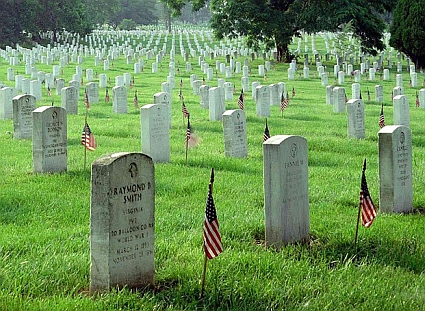Memorial Day
It is a Jewish custom to place a pebble or small rock on a tombstone when visiting a grave. One explanation is that Abraham placed a pile of rocks over the grave of his wife, Sarah. Visitors to the grave would add a rock to the pile. It was a way to say that they wanted to add to Sarah’s monument so that she would never be forgotten.
In the same way, we place small flags on the graves of those who sacrificed their lives defending our freedom. When we display a flag on a fallen hero’s headstone, it is a way of saying.” We decorate your monument, that your sacrifice will not be forgotten.” Display of flags on Memorial Day has been expanded to include the graves of all veterans. We do this to recognize their service to our country.

On Memorial Day larger flags flown from flagpoles are lowered to half-staff during the morning. This is done to collectively to honor all our war dead and deceased veterans. When the U.S. flag is first raised in the morning, it is raised for an instant to the top of the pole. It is then lowered to the half staff position. At noon, the flag returns to the top of the pole. It remains at full staff until the end of Memorial Day when it is lowered for the evening.
This centuries old custom began at sea. Sailors lowered their ship’s ensign to half-mast as a sign of mourning. The practice spread to land and is now a sign of mourning around the world. Visit UtahFlagMan.BlogSpot.com for more information about flags flown at half-staff and at half-mast.
